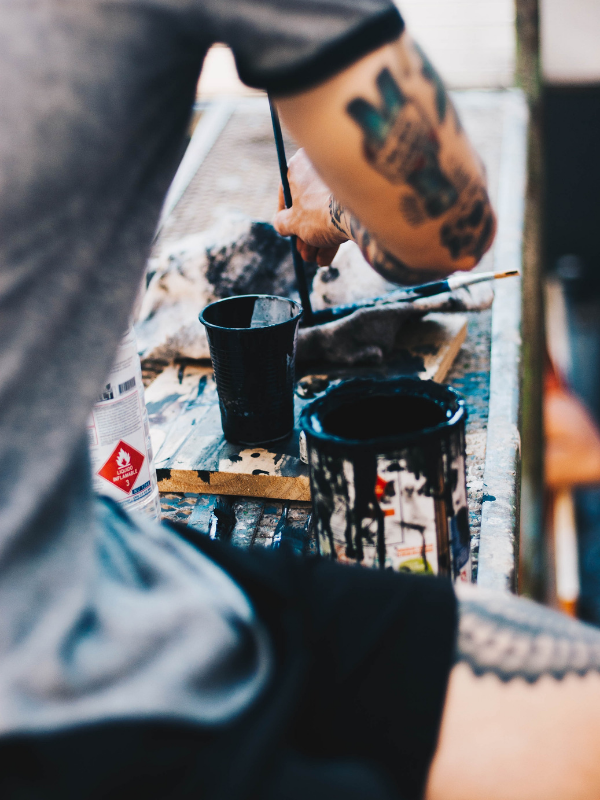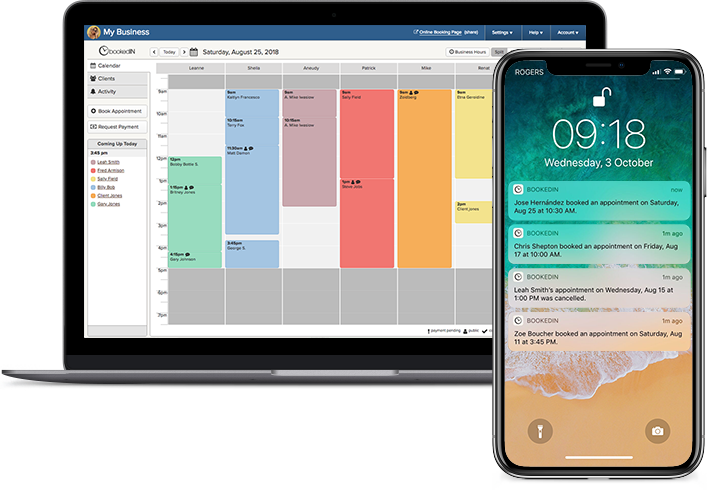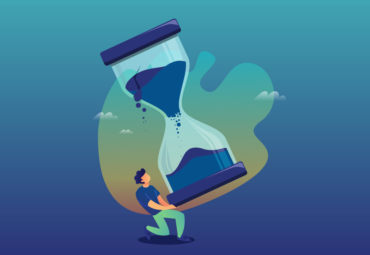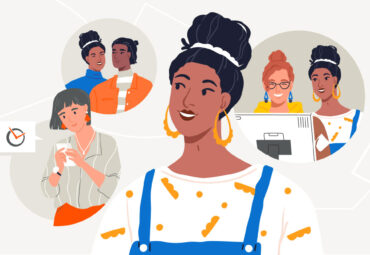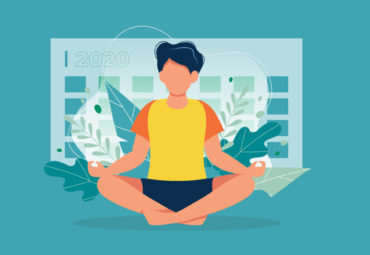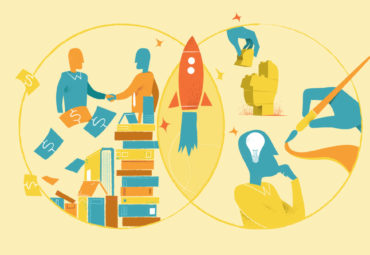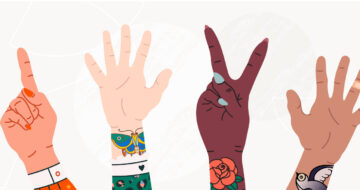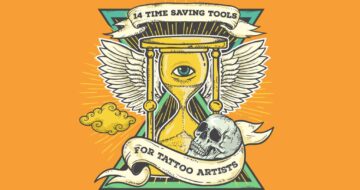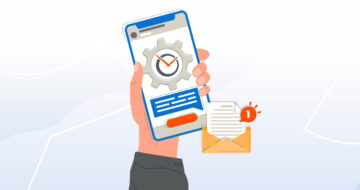Productivity Showdown: Single-Tasking vs. Multitasking
I’m embarrassed to tell you how long this blog post took me to finish. While writing, I’ve easily gotten up to make a prosciutto & swiss cheese sandwich, played tug of war with my pug Otis, Marie Kondo’d my Spring wardrobe and dabbled in a bit of web design. That’s right, my name is Emma, and I’m a (recovering) multitasker.
You see, I’ve spent the last 20 years of my professional life touting my “ability” to start multiple tasks and work on them simultaneously. As technology has taken off, it’s only gotten more complex. On a “good” day I’ll have 7 tabs, two live chat boxes, and multiple browsers open with a side of iPhone buzzing with notifications. Oh, and did I mention I “can’t” work without my favorite music?
Now, you’re probably wondering, how do I get anything done? Well, it’s challenging to say the least.
Even though research and science have been whispering multitasking is passè, it wasn’t enough. Not until a gnawing pit in my stomach grew every time I sat down to start my day did I realize something had to give. #anxietysucks
So, today it’s an epic productivity showdown between multitasking and single-tasking. We’re doing a deep dive into how you can train yourself to find the competitive advantage by staying focused.
In this corner: Your brain on multitasking
According to Neuropsychologist and brain-training expert Theo Tsaousides, “Multitasking divides your attention from 100 percent to different portions, so some smaller amount goes on one task, some smaller percentage goes on another task. You ultimately are not giving your 100 percent focus and attention to what you need to be working on.”
What that means is focusing on more than one task at a time, or repeatedly switching back and forth between two or more jobs, can leave you less targeted and less efficient than you may think.
And it gets worse. So much worse.
Stanford University researcher Clifford Nass found that people who were considered heavy multitaskers were worse at sorting out relevant information from irrelevant details:
“We have scales that allow us to divide up people into people who multitask all the time and people who rarely do, and the differences are remarkable. People who multitask all the time can’t filter out irrelevancy. They can’t manage a working memory. They’re chronically distracted.”
They also showed greater difficulty when it came to switching from one task to another and were less mentally organized. The horrifying part though – was these results happened even when these people weren’t multitasking. The study revealed that even when these chronic multitaskers were focusing on a single task; their brains were less effective and efficient.
If you still feel like you don’t fall into this group, after all, multitasking is your jam…keep reading.
The effects of daily multitasking
When you find you’re having trouble focusing on one task at a time it could be damaging your brain – even just watching someone who’s texting while talking to their co-workers and eating the lunch can drop your comprehension by a whopping 17%!
Look, daily multitasking affects your ability to:
- Be effective while you’re multitasking
- Be useful when you’re not multitasking
- Prioritize to achieve your goals
- Use your short-term memory
- Get creative
- Find your flow
It takes time for your mind to adjust to a shift in focus. Each time you change your attention, you’re forcing your brain to re-focus, and this can drain you of energy, time and productivity.
As a shop owner, multitasking is the ultimate optical illusion. It tricks you into the feeling of productivity and lulls you into a sense of security with the comfort of frenetic activity you’re intimately familiar with already. Multitasking has likely become second nature to you – the idea of focusing on a single task will seem foreign.
Let’s make single tasking a whole lot more familiar.
Related Post: How to Balance Work and Life: The Ultimate Guide
In this corner: Your brain on single-tasking
It’s difficult to wrap your head around why focusing on one task at a time would be beneficial to you in the long term. Even when we hear stats like multitasking can cause long-term damage to our brains, or we make more mistakes when we multitask. For those of us who are accustomed to buzzing around, the very thought of taking a step back and slowing down seems counter-intuitive. But it doesn’t have to be. In fact, even small changes (that you can do in just 10 minutes/day) can make all the difference for improving productivity.
Begin your day in the present
When was the last time you started your day without first rolling over and checking your messages or hopping onto social media to review your shop’s Instagram page? For the majority of us, traditional alarm clocks went out of style with acid wash jeans. When we jolt awake with that familiar beep, we immediately connect to a digital wonderland. Distraction and multitasking begin almost immediately upon waking – how many appointments came through on the appointment scheduling software since I went to bed last night, who won the basketball game – how do I have 5 missed text messages already?!
How do you begin the day grounded in the real world? First off, don’t sleep with your phone. Easier said than done I know. Mine has resided underneath my pillow, a headphone in my ear, streaming podcasts to my sleeping brain for the last decade. I get it.
Starting your day free from digital connection puts you in the present. You’ll begin to build more focus and intention without the distraction you’d be receiving from outside noise.
Start small
Take some baby steps to focus down to single tasking. Rather than making dinner while listening to music and having an in-depth conversation via text message – try cutting out the digital part of the equation. Or, the next time you’re watching TV and reading a book, shut off the television. It’s shocking how much more information you’re able to retain when you’re brain can focus on one task that requires conscious thought.
Make your most challenging task priority #1
There’s a strategy I love called “Eating the Frog” born from something that Mark Twain said:
“If the first thing you do each morning is to eat a live frog, you can go through the day with the satisfaction of knowing that that is probably the worst thing that is going to happen to you all day long.”
Now, that’s disgusting, and I love animals, so I’m not encouraging eating frogs, but as Brian Tracy explains in his theory, your “frog” is your biggest, most important task, the one you’re most likely to procrastinate on if you don’t do something about it.
We all do this. I understand in service-based industries there are tasks you’ll have to complete whether you feel like it that day or not. For example, a back piece booked months in advance needs to be started even when you’re exhausted or have a mile long to-do list.
But what about those tasks that are super important yet you’re still procrastinating over because you’re unsure how to handle them? Like the client who’s requested a cover-up you know isn’t going to be possible. You’re hesitant how to approach the situation, so instead of handling it, you avoid it altogether. Or maybe, your shop has reached a point where you need to hire another artist or barber, but the job is so daunting you distract yourself with other tasks – emails, socializing with staff and cleaning out your office.
It’s time to eat that frog.
Remove all distractions
Distractions can be different for everyone, but they’re all around us and growing exponentially as time passes. Perhaps you’ve allocated yourself an hour for office time each day to get a leg up on staff scheduling, get meetings set up and put together some reviews. You feel like you’re on a roll – except you’re not. As you sit down at your laptop to get started you log in to Instagram to see how the shop page looks and then peek at Facebook, somehow you end up on Youtube – now that’s three tabs open and 45 minutes deep. You haven’t even started your planned tasks yet.
Recognizing what’s going to knock you off course is imperative. Take the preventative step to remove all distractions before you get started: set up a “do not disturb” on your computer (use an app like Rescuetime), turn off your notifications, communicate to your staff that you’re off limits for a certain period (barring emergencies). Planning is the key to success here.
Embrace progress over perfection
Nobody’s perfect and aiming for it will always do more harm than good. The quickest way to derail yourself is to shoot for the unattainable. Instead, strive for progress over perfection and celebrate the steps along the way. Giving yourself the flexibility to muff up or stall throughout your journey will take the pressure off and inevitably make it more enjoyable.
When multitasking is ingrained in your DNA (like it is in mine) merely understanding how to make the shift to single-tasking isn’t enough. We’ve been led to believe that if we’re not always working on multiple things we won’t get ahead faster than those who stand in our way – and after all, isn’t that the end game? Well, not so fast.
I don’t know about you, but I’d prefer not to cross the finish line an anxiety-riddled mess, drained of my creativity without a short term memory to speak of. So, let’s take a look at 5 reasons single-tasking is the clear winner when it comes to improving your productivity while maintaining your sanity.
1. Lowers your stress, anxiety and promotes your overall happiness
When your brain isn’t being forced to flit back and forth between competing tasks your cortisol level drops (translation: your stress level lowers). Now that your body isn’t in a constant state of panic trying to decide what to do next and trying to remember what it was doing, your anxiety level starts to fall inducing a feeling of calm. Without increased stress and anxiety would you be happier? Yep, thought so.
2. Increases your productivity and commitment
Commitment is tough; I think that’s why multitasking is so alluring. You feel like you’re super productive, but you never have to choose one task to commit to…interesting theory right? Well, with single-tasking you need to go all in. Doing so will elevate your rate of productivity. According to Dr. Wagner who was part of the Stanford University Research Study of heavy multitaskers:
“When they’re in situations where there are multiple sources of information coming from the external world or emerging out of memory, they’re not able to filter out what’s not relevant to their current goal. That failure to filter means they’re slowed down by that irrelevant information.”
Ouch. This is an excellent demonstration of why it may be time to stop sending emails to your clients when you’re engrossed in those hockey playoffs on TV. By doing less, you might accomplish more.
3. Strengthens your self-discipline
When you start any new routine it takes will power and self-discipline to get through – single-tasking is no different. It might feel uncomfortable forcing yourself to focus on one item when your brain is jumping from one thing to the next, and your body is itching to skip to the next. Try to remember building this new skill will strengthen your self-discipline, just like waking up every morning and meditating or going for a run.
4. Enhances your creativity
It may seem counterintuitive, but when you challenge yourself to remain focused on one task, you’re allowing your creativity to flow. A prime example of this is one many of you will be familiar with: sketching.
As artists, taking the time for free form creativity is imperative, but once you’re busy with client work, it can get pushed aside. Making it a priority to sit and get absorbed in your art for an extended period will allow you to get into a flow where your creativity takes off.
5. Builds your attention span
You’ve all heard the comparisons of our current attention span (8 seconds) to that of a goldfish (9 seconds), not cool. If you’re anything like me, you find that pretty insulting – and a lot scary. Single-tasking helps to build up your attention span by practicing and increasing your focusing muscle. Think of single-tasking like bicep curls for your mind, you might not want to do them but tank top season is just around the corner.
The scorecards: Multitasking vs. Single-Tasking
Alright ladies and gentleman, there you have it. We’ve looked deep into the hearts of both multitasking and single-tasking, and the winner seems undeniable but let’s do a quick recap:
As a heavy multitasker you’ll:
- Be less effective while you’re multitasking and when you’re not
- Have difficulty prioritizing to achieve your goals
- Struggle with your short-term memory
- Be less creative & have a hard time getting into a flow
- Feel mentally disorganized
- Become chronically distracted
- Lose productivity & time
- Feel drained of your energy
- Have higher levels of stress and anxiety
- Struggle to achieve happiness
When you focus on single-tasking you’ll:
- Lower levels of stress and anxiety
- Increase your creativity
- Experience fewer mistakes
- Enhance your productivity
- Improve your attention span
- Build your self-discipline
- Train yourself to be less distracted
- Improve your relationships by becoming more present
- Become better at setting goals and priorities
- Maximize your time well spent
It may be difficult to retrain yourself, and it’s going to take time and practice, but as you can see from both the research and the benefits of making the switch, it’s well worth the discomfort.
Are you up for the challenge?
Let us know in the comments how you can start single-tasking to elevate your business.


